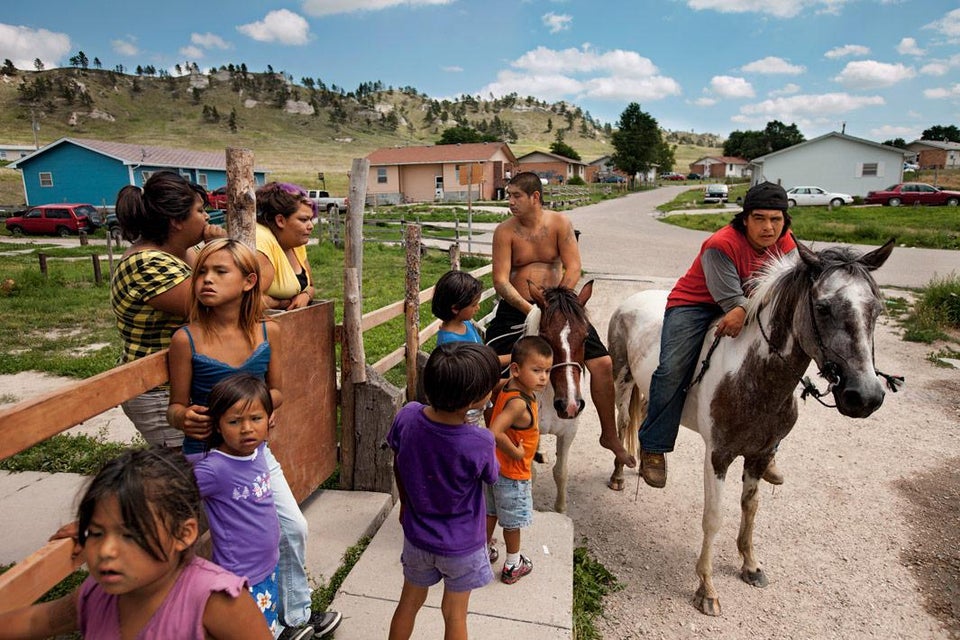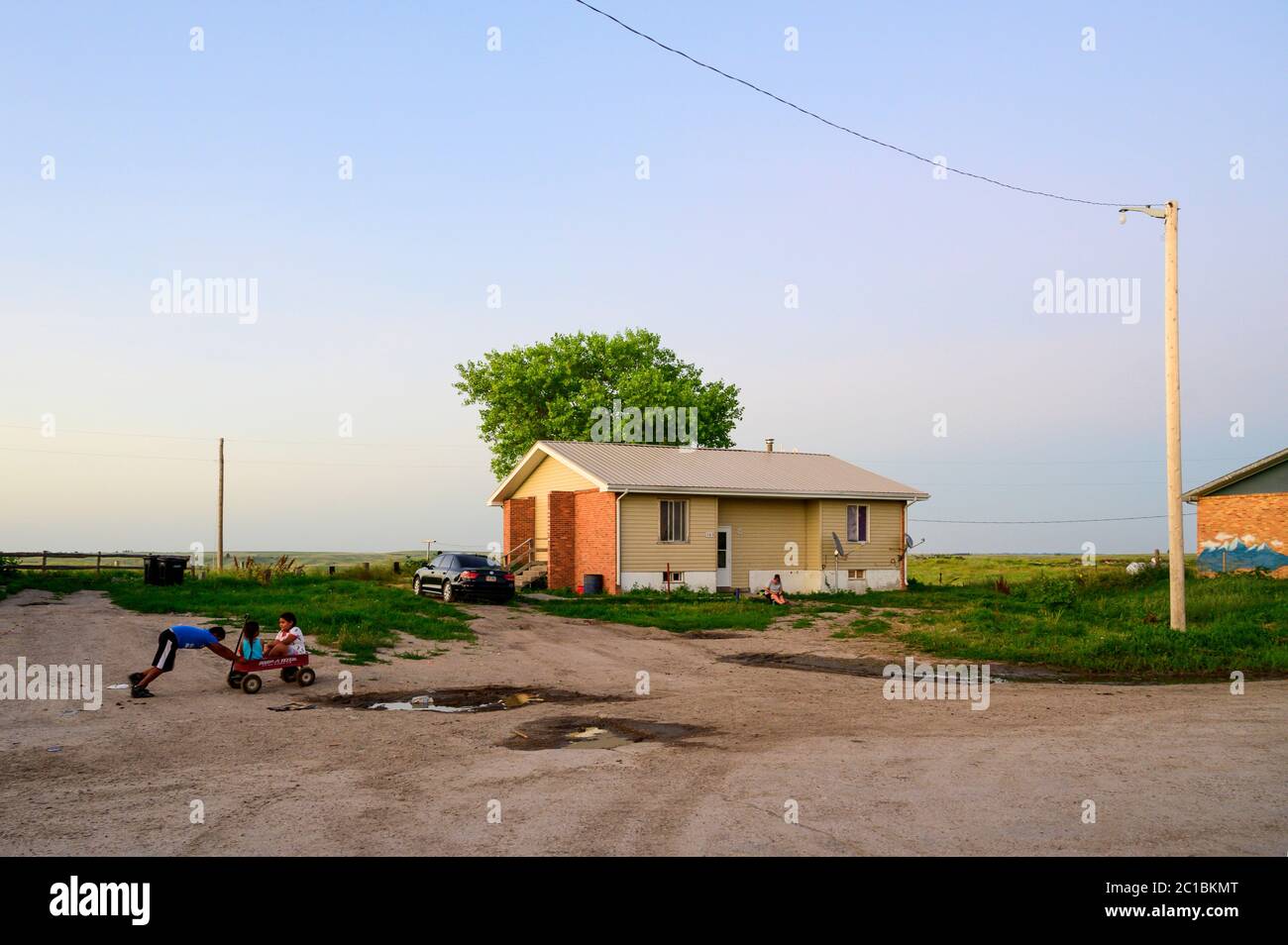Living the Rez Life: A Look at South Dakota’s Indian Reservations
Living the Rez Life: A Look at South Dakota’s Indian Reservations

South Dakota, known for its vast plains, rolling hills, and the majestic Black Hills, is also home to nine federally recognized Native American tribes, each with its own unique history, culture, and vibrant community. These communities, often referred to as "reservations," are more than just geographical locations; they’re living, breathing testaments to the resilience and spirit of the Lakota, Dakota, and Nakota peoples, collectively known as the Sioux.
Stepping onto a South Dakota reservation is like stepping back in time, where traditions are cherished, and the land holds a deep spiritual significance. But it’s not just about the past; these communities are constantly evolving, working to preserve their heritage while embracing the challenges and opportunities of the 21st century.
Related Articles: Living the Rez Life: A Look at South Dakota’s Indian Reservations
- Unveil the Hidden Gems: Explore the Indian Reservation Near Houston
- Unveil the Culinary Tapestry of "Indian food jakarta pusat": A Journey of Flavors and Authenticity
- Uncover the Hidden Heritage: Discover Indian Tribes in Richmond, Virginia
- Discover the Enchanting World of Oklahoma's Indian Reservations
- Discover California's Native Heritage: Uncover the Tribes that Shaped the Golden State
A Tapestry of Tribes:
South Dakota’s reservations are a diverse tapestry, each with its own story to tell. Let’s take a closer look at some of these vibrant communities:
-
The Pine Ridge Reservation: This sprawling reservation, home to the Oglala Lakota, is the largest in South Dakota, encompassing over 2.4 million acres. It’s a place of stark beauty, with rugged badlands and rolling hills, but it’s also a place that has faced its share of challenges, from poverty and unemployment to health disparities. Despite these struggles, the Oglala Lakota have a strong sense of community and a deep commitment to preserving their culture.
-
The Rosebud Reservation: Nestled in the heart of the state, the Rosebud Reservation is home to the Sicangu Lakota. Known for its rich history and vibrant cultural traditions, the reservation has been a center of Lakota culture for centuries. The Rosebud Sioux Tribe is actively working to promote economic development and improve the quality of life for its members.

-
The Cheyenne River Reservation: Located in the north-central part of the state, the Cheyenne River Reservation is home to the Cheyenne River Sioux Tribe. This reservation is known for its vast grasslands and its strong connection to the land. The tribe is actively working to revitalize its language and cultural traditions, passing on knowledge to younger generations.

The Standing Rock Reservation: Spanning the border of North Dakota and South Dakota, the Standing Rock Reservation is home to the Standing Rock Sioux Tribe. Known for its role in the Dakota Access Pipeline protests, the reservation has become a symbol of tribal sovereignty and resistance. The tribe is dedicated to protecting its sacred lands and its cultural heritage.
Beyond the Stereotypes:
It’s important to remember that these communities are not monolithic. They’re filled with individuals, each with their own unique stories, aspirations, and struggles. The reservations are not just about poverty and hardship; they’re also about resilience, creativity, and hope.

A Look at Life on the Reservation:
Life on a South Dakota reservation can be challenging, but it’s also deeply rewarding. The strong sense of community, the deep connection to the land, and the vibrant cultural traditions create a unique and fulfilling way of life.
Challenges and Opportunities:
The reservations in South Dakota face a number of challenges, including:
-
High rates of poverty: The poverty rate on many reservations is significantly higher than the national average. This is due to a number of factors, including limited economic opportunities, lack of access to education, and historical injustices.
-
Health disparities: Native Americans on reservations often face higher rates of chronic diseases, such as diabetes, heart disease, and cancer. These disparities are linked to a number of factors, including poverty, lack of access to healthcare, and environmental factors.
-
Lack of economic development: Many reservations lack access to adequate infrastructure, such as roads, water, and electricity. This makes it difficult for businesses to thrive and for residents to find jobs.
-
Cultural preservation: The challenges of modern life can make it difficult to preserve traditional languages, customs, and ways of life.
Despite these challenges, there are also opportunities for growth and development. The tribes are working to address these issues through:
-
Economic development: Tribes are investing in a variety of economic development projects, such as casinos, tourism, and renewable energy.
-
Education: Tribes are working to improve access to education, both on and off the reservation.
-
Healthcare: Tribes are investing in healthcare infrastructure and expanding access to quality healthcare services.
-
Cultural revitalization: Tribes are working to preserve and revitalize their languages, customs, and traditions.
A Call for Understanding:
It’s important to understand that the reservations are not just places of poverty and hardship. They’re also places of beauty, resilience, and hope. By visiting a reservation, learning about the history and culture of the tribes, and supporting their efforts to address the challenges they face, we can contribute to a more just and equitable future for all.
Exploring the Reservations:
If you’re interested in learning more about South Dakota’s reservations, there are a number of ways to do so:
-
Visit the reservations: Many reservations welcome visitors and offer a variety of cultural experiences, such as powwows, museums, and historical sites.
-
Attend powwows: Powwows are vibrant celebrations of Native American culture, featuring traditional dances, music, and crafts.
-
Visit museums and cultural centers: There are a number of museums and cultural centers on the reservations that offer insights into the history, culture, and art of the tribes.
-
Support Native American businesses: By supporting Native American businesses, you can help to create economic opportunities on the reservations.
FAQ about Indian Reservations in South Dakota:
Q: Are reservations open to the public?
A: Most reservations welcome visitors, but it’s always a good idea to check with the tribe’s website or contact the tribal office before visiting.
Q: What are the rules and regulations for visiting a reservation?
A: Each reservation has its own set of rules and regulations, so it’s important to familiarize yourself with them before visiting. Generally, it’s best to be respectful of the culture and traditions of the tribe.
Q: How can I support the tribes?
A: There are many ways to support the tribes, such as visiting their businesses, attending cultural events, and donating to organizations that support their efforts.
Q: What is the best way to learn more about the history and culture of the tribes?
A: The best way to learn more is to visit the reservations, talk to the people who live there, and read books and articles about their history and culture.
Q: What is the future of the reservations?
A: The future of the reservations is uncertain, but the tribes are working hard to create a better future for their members. By supporting their efforts, we can help to ensure that they have the resources they need to thrive.
Conclusion:
South Dakota’s Indian reservations are more than just geographical locations; they’re living, breathing communities with rich histories, vibrant cultures, and a deep connection to the land. By understanding and respecting the challenges and opportunities that these communities face, we can work together to create a more just and equitable future for all.
/res-5808b9813df78cbc287e2ef8.jpg)
Closure
Thus, we hope this article has provided valuable insights into Living the Rez Life: A Look at South Dakota’s Indian Reservations. We hope you find this article informative and beneficial. See you in our next article!